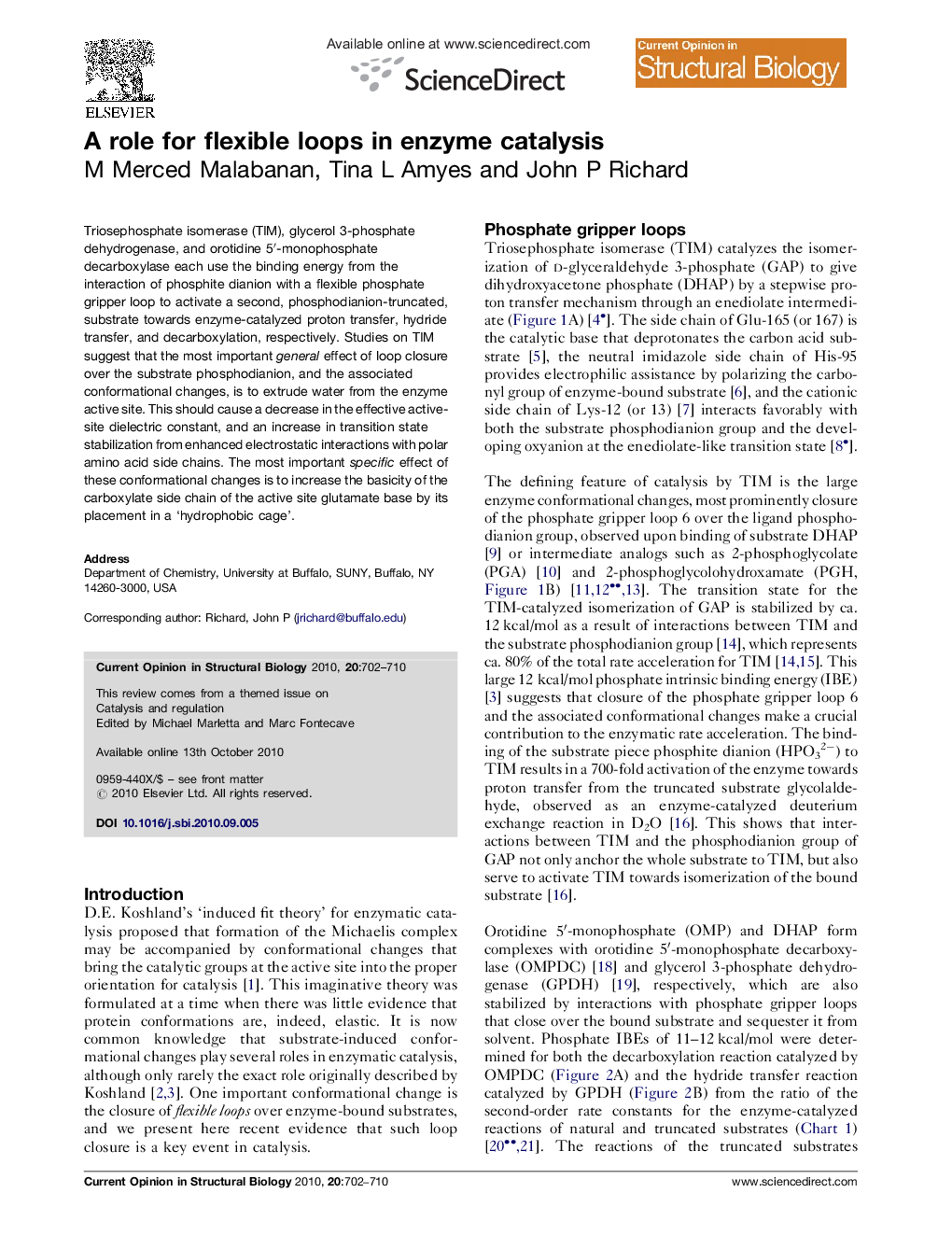| Article ID | Journal | Published Year | Pages | File Type |
|---|---|---|---|---|
| 8320278 | Current Opinion in Structural Biology | 2010 | 9 Pages |
Abstract
Triosephosphate isomerase (TIM), glycerol 3-phosphate dehydrogenase, and orotidine 5â²-monophosphate decarboxylase each use the binding energy from the interaction of phosphite dianion with a flexible phosphate gripper loop to activate a second, phosphodianion-truncated, substrate towards enzyme-catalyzed proton transfer, hydride transfer, and decarboxylation, respectively. Studies on TIM suggest that the most important general effect of loop closure over the substrate phosphodianion, and the associated conformational changes, is to extrude water from the enzyme active site. This should cause a decrease in the effective active-site dielectric constant, and an increase in transition state stabilization from enhanced electrostatic interactions with polar amino acid side chains. The most important specific effect of these conformational changes is to increase the basicity of the carboxylate side chain of the active site glutamate base by its placement in a 'hydrophobic cage'.
Related Topics
Life Sciences
Biochemistry, Genetics and Molecular Biology
Biochemistry
Authors
M Merced Malabanan, Tina L Amyes, John P Richard,
